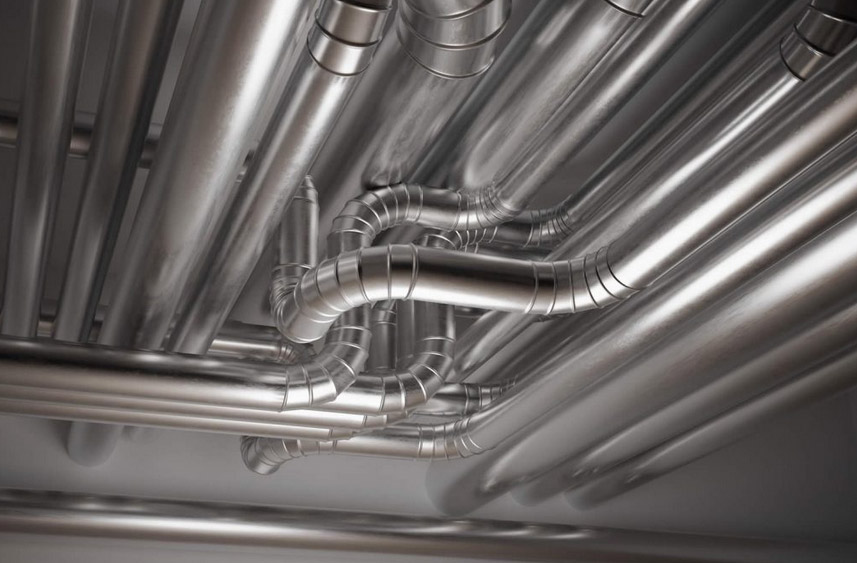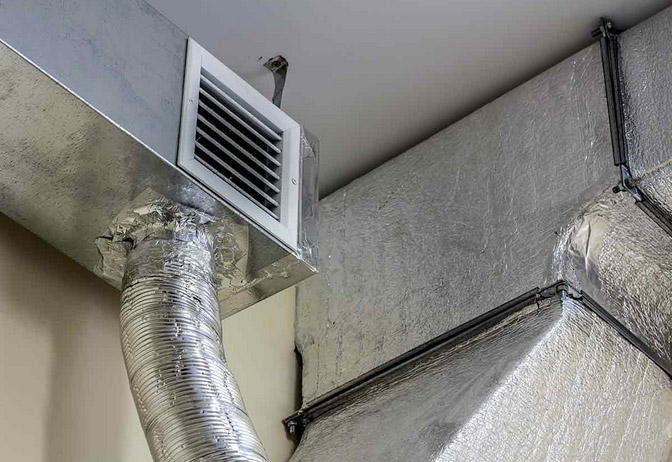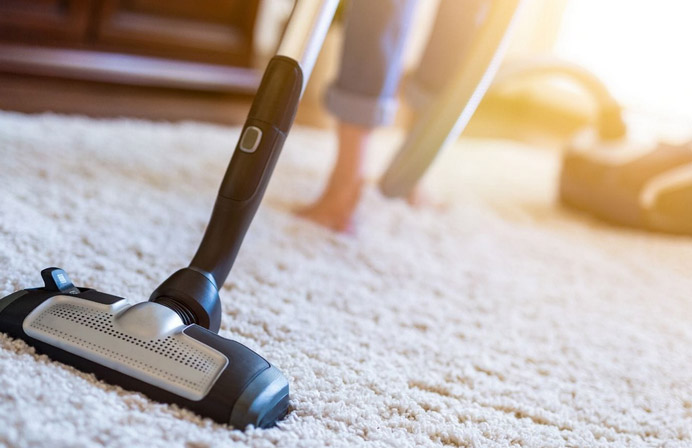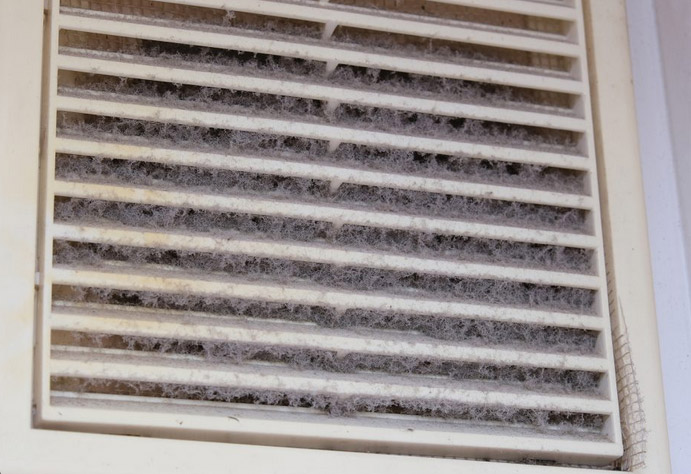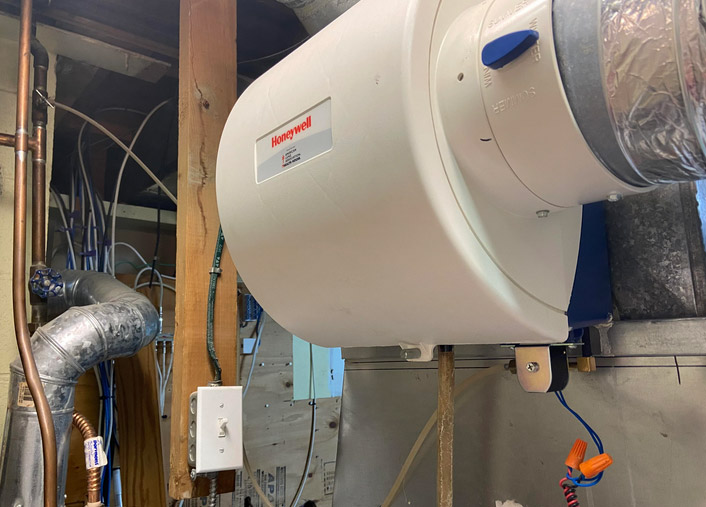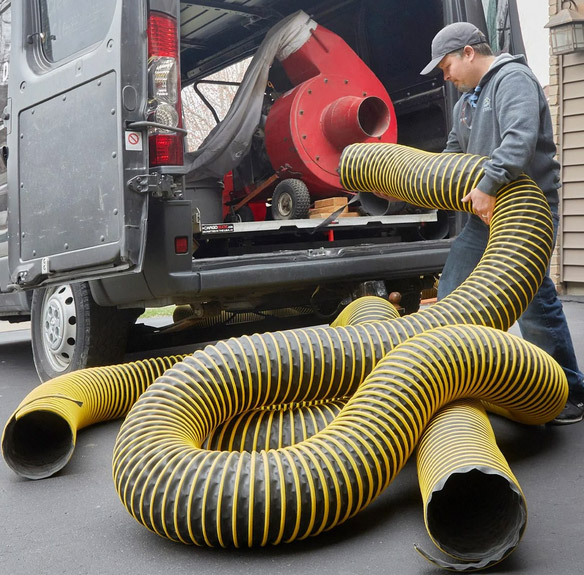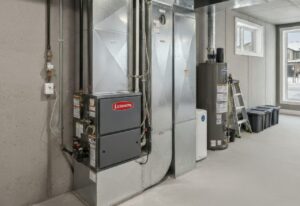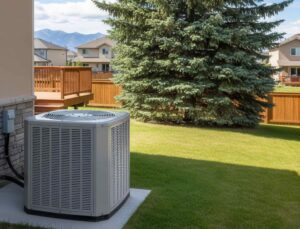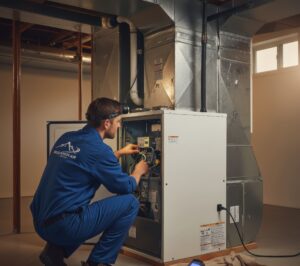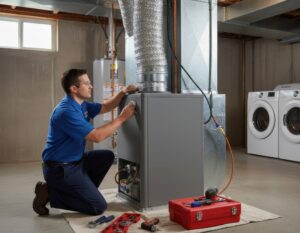Duct cleaning can be pricey so it’s important to decide whether you need it and what benefits you and your heating, ventilation, and air conditioning system can expect from it.
Some duct cleaning services make bold claims that cleaning the ductwork protects the family’s health, greatly improves air quality, and improves the efficiency of the system. Other sources suggest that duct cleaning can do little for air quality and may even stir up more dust around the home and make respiratory problems worse.
Who’s right? Should you perform regular duct cleaning or is it a waste of money? Can you just let sleeping dust lie?
Let’s find out…
What is duct cleaning and when is it recommended?
Duct cleaning is the process of clearing away the dust, grime, debris, and other unwanted contaminants from the fiberglass, flexible plastic, or sheet metal piping in the roof. These ducts circulate air heated by the furnace or cooled by the air conditioning around your home to keep you and your family comfortable:
- Return ducts take air out of a space and back to the HVAC system.
- Supply ducts transport conditioned air from the HVAC system to the space.
Cleaning the ducting usually requires a professional duct cleaning service because of the specialist vacuum equipment required, the different techniques depending on the type of ducting, and the accessibility difficulties involved.
The consensus you will find online is that duct cleaning is recommended every 3-5 years—but it is required more often in certain circumstances. The advice of the National Air Duct Cleaners Association (NADCA) in the U.S. is that air ducts should be inspected at least once a year, and cleaned as needed.
When is duct cleaning recommended?
Conditions vary in every home but most Alberta homeowners know that maintaining and cleaning a furnace regularly is essential.
More specifically, duct cleaning is recommended if:
- Smokers are in the household
- Residents suffer from allergies or asthma
- Pets shed hair and dander
- Home improvements or renovations have been completed (and ducts weren’t sealed)
- Mold or blockages are affecting the ductwork
- Performance or efficiency issues affect the HVAC system even after servicing the furnace
Duct cleaning is promoted by the NADCA as necessary for health, optimal performance of the HVAC system, and indoor air quality.
It should be noted, however, that the NADCA “supports members’ success with standards, education, certification, marketing, and advocacy to promote ethics and the highest quality services.”
In other words, the association has a vested interest in promoting duct cleaning. Duct cleaning companies do too. Homeowners should not, therefore, simply take their recommendations at face value.
What is the government’s advice on duct cleaning?
The Environmental Protection Agency (EPA) in the U.S. doesn’t always get it right but it is a generally dependable source of information for homeowners.
Importantly, it states that “duct cleaning has never been shown to actually prevent health problems.”

The EPA goes on to say:
“Neither do studies conclusively demonstrate that particle (e.g., dust) levels in homes increase because of dirty air ducts. This is because much of the dirt in air ducts adheres to duct surfaces and does not necessarily enter the living space. It is important to keep in mind that dirty air ducts are only one of many possible sources of particles that are present in homes.”
This view was highlighted in a Washington Post article in 2019, which claimed that the benefits of duct cleaning are overplayed. In fact, the article states that “the little independent research performed on duct cleaning indicates that the process stirs up so much dust that it creates a bigger problem than it solves.”
The article points out that “Government studies from the United States and Canada and health professionals who have investigated duct cleaning stop short of recommending against it, but they also don’t endorse it as a routine measure.”

In Canada, the Canada Mortgage and Housing Corporation (CMHC), a government agency, conducted a study in the 1990s to investigate whether duct cleaning makes indoor air healthier and reduces energy costs by improving airflow. The study found that there was no significant improvement in air quality and that duct cleaning alone did not improve airflow or energy efficiency.
Airborne dust is generally recognized as a potential problem for indoor air quality but dust and debris inside air ducts are often stable and settled. If air blows past the settled matter and doesn’t dislodge it, clearing it may make no difference to indoor air quality. In other words, dirty ducts don’t necessarily mean poor quality indoor air.
Is duct cleaning a necessary part of general HVAC maintenance?
Air ducts are a central component of a home’s HVAC system as they are responsible for delivering warm or cool air to all rooms. But ductwork is usually very sturdy and leaks or blockages are relatively infrequent. While emergency furnace repairs are quite common in Calgary homes, the ductwork is rarely to blame.
As a general rule, therefore, AC tune-ups and furnace maintenance are essential every year but duct cleaning is usually unnecessary. It is certainly not required more often than every five years unless there is a high exposure/buildup of dust from construction/renovations or a demonstrable deterioration of air quality in your home that cannot be put down to anything else but the ductwork.
Often, other reasons are to blame for a deterioration of air quality or heating/cooling performance—more commonly a problem with the HVAC’s air filter, which could be easily remedied. Maybe the furnace components need attention or a furnace component like a blower motor needs checking, lubricating or replacing.
Furnace and air conditioning installations rely heavily on the free, unimpeded flow of air through the system for effective heating and cooling. If airflow is blocked or obstructed by dirt, dust, soot or pet dander buildup, problems can develop. But dirty ductwork is just one possible culprit.
Duct cleaning should, therefore, be relatively low on the list of priorities after other furnace troubleshooting steps have been performed. If those steps don’t correct the problem, duct cleaning might make a difference and be worthwhile.
When is duct cleaning advisable?
According to the EPA, duct cleaning is advisable if any of the following conditions apply:
- Substantial mold is growing in the HVAC system: it may be difficult to check the ductwork but moldy insulation must be replaced and musty odors and lingering moisture on the home are telltale signs of a potential mold infestation.
- The ducts are infested with vermin, such as rodents or insects. You may notice droppings or dead organic matter and may first need to hire a pest exterminator.
- The ductwork is blocked by excessive dust and debris and/or particles are released into the home from your supply registers. This may occur if construction work is performed without sealing the registers, for instance.
How much does duct cleaning cost?
To consider whether duct cleaning is a waste of money, we need to first understand how much the service costs.
Duct cleaning costs in Alberta vary depending on the home and HVAC system size, as well as the type of ductwork, accessibility, the number of technicians required, the level of expertise of the duct-cleaning crew, and how dirty the ducts are.
As a general guideline, expect to pay between $250 and $600 but costs can be as high as $1,000 or even more.
Pros and cons of duct cleaning
The main pros of duct cleaning include:
- Airflow in the HVAC system may be improved—but only if a blockage is removed
- Unhealthy dust or other contaminants that can become airborne may be removed from the home’s indoor air
- The number of allergens in the indoor air may be reduced
- HVAC efficiency and energy usage may improve if a blockage is removed
The potential cons of duct cleaning are:
- Duct cleaning may be unnecessary as another HVAC issue is causing the problem(s)
- Some door-to-door duct cleaning services are scammers
- It’s a waste of money if few tangible benefits (or no benefits at all) result
- The root cause of the allergies or other issues may not be addressed
- It could disrupt settled dust and cause it to become airborne and circulate through the home, worsening any problems
Main considerations before cleaning air ducts
Duct cleaning doesn’t come cheap so unless you and your home are going to benefit from the process, it can be hard to justify. Consider the following questions before booking a duct cleaning service:
What’s the main purpose of cleaning the ducts?
Are you considering duct cleaning to address health issues, such as allergies? If so, duct cleaning may not address the root causes of these allergies and you may simply want to clean the carpets, curtains, upholstery, and bedding instead.
If you’re hoping to improve HVAC efficiency or other performance issues, find out the likelihood of these issues being solved by duct cleaning by consulting with an HVAC professional you can trust before forking out hundreds of dollars for a duct cleaning service.
Have you checked other potential HVAC issues first?
Regular annual HVAC maintenance is a sensible first step if you notice efficiency and performance issues with your heating and cooling system.
Provided you work with trustworthy professionals, your HVAC technician will advise you if duct cleaning is recommended according to what is discovered during the tune-up.

Are you being told the truth?
Some duct cleaning services may not be entirely honest as they need the work. Often, their services are underpriced because they’re touting for business.
Get three estimates before hiring a service and check references and why the ducts need cleaning before hiring. Bear in mind that you may receive a more accurate assessment from a general HVAC installation, maintenance, and repair company than a duct cleaning service.
Can registers be dusty but the air in the home clean?
Dust buildup on registers doesn’t necessarily mean that dust is in the ducts and circulating through your home. Most of the dust could be trapped by the grilles or grates before it enters the ducts and they may just need the occasional vacuum or wipe down to improve their appearance.
Could unprofessional cleaning damage the ductwork?
If you’re considering cutting costs by doing it yourself or using a cheap duct cleaning service, bear in mind that it could damage the ductwork and be counter-productive.
Professionals use specialist equipment and duct-cleaning strategies that dislodge and suck up dust and grime with high-end machines with HEPA filters, venting the vacuums outside of the home so that the indoor air is protected. This may not be the case with cheaper services.
7 steps to maintain air quality in the home
To improve your home’s air quality without going through the hassle and expense of duct cleaning, you should:
- Upgrade your air filter: use the highest MERV-rated filter that your system can handle, MERV 8 filters trap airborne contaminants, such as dust, mold, and pollen while MERV 13 filters can trap smaller particles from smoke, smog, and viruses (but might be overly restrictive for some HVAC systems).
- Change or replace your filter regularly: you should clean reusable filters or replace disposable filters every 2-3 months or when they look clogged. This will help maintain airflow and efficient HVAC performance.
- Perform regular HVAC maintenance: book professional inspections at least once a year before the winter sets in as this has many benefits for the performance and longevity of your HVAC system.
- Regularly vacuum the home with a good quality vacuum cleaner and, if you have pets, change pet bedding and remove pet dander frequently.
- Use a whole-home humidifier/dehumidifier to balance humidity between 30 percent and 50 percent all year round: most Alberta homes suffer from a lack of humidity in winter but may need to deal with excess moisture in the summer months (repairing leaks promptly will prevent excess moisture build-up too).
- If you’re doing renovating or need construction work done, this will create dust and debris, so you should seal the vents and registers and make sure that the home is well-ventilated to ensure that indoor air quality can be preserved (don’t use the HVAC system until the dust has been expelled from the home).
- Clean registers with a vacuum every six months or so (these may be in the floor, wall or ceiling) to avoid the buildup of dust. It is relatively normal for these vents to gather some dust and grime.
Quick tips for hiring a duct cleaning company
Here’s what you should do when looking for a duct cleaning company:
- Check the company’s track record through references and reviews from past customers
- Read any complaints made against the company or service
- Ask what their procedures are and compare them with best practices
- Check their professional licensing
- Compare three estimates and double-check what’s covered (does the quote include everything?)
Avoid duct cleaning companies that make unsupported claims about the health benefits or efficiency improvements you will make before they have even seen your ductwork. Also, if they claim that duct cleaning is part of general AC or furnace maintenance, be wary.
Conclusion: Is duct cleaning a waste of money?
If you follow the above steps for maintaining air quality and don’t experience any major issues with your ductwork, duct cleaning could be a waste of money.
Before you schedule duct cleaning, consider the facts, understand the issues that might necessitate duct cleaning, and perform other regular HVAC maintenance before looking at the ducts.
Indoor air quality, performance, and efficiency issues may be due to other issues that affect HVAC systems rather than blocked or dirty ductwork. At the same time, don’t discount ductwork issues. Stay attentive to the warning signs, have the ducting inspected regularly, and consult with your HVAC team for advice on whether you need duct cleaning.All of our furnace professionals are SAIT-certified and trained to service any type or brand of furnace in Calgary. Call us at 403-236-4366 or contact us online to book duct cleaning.


